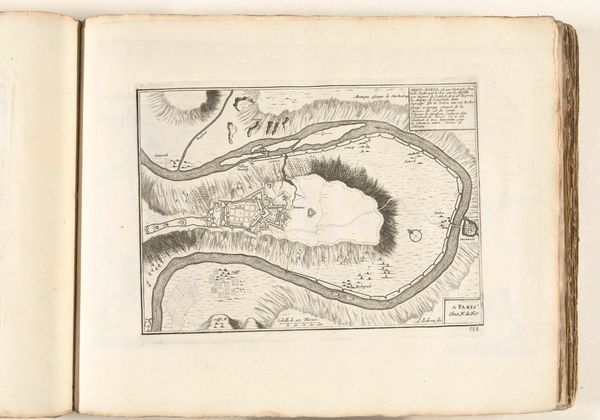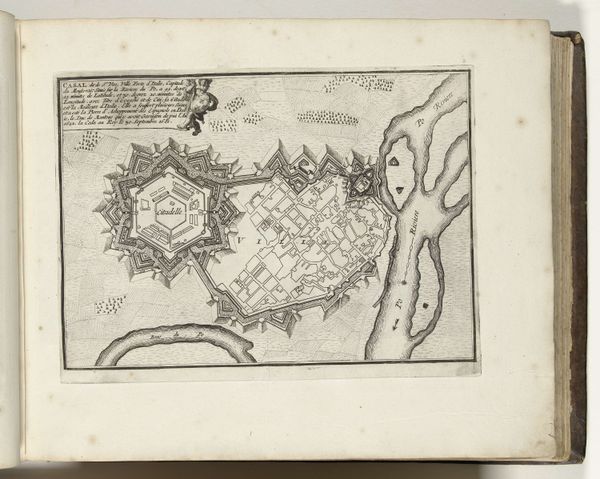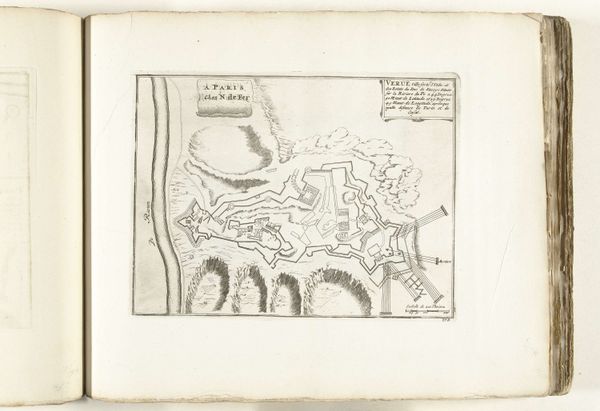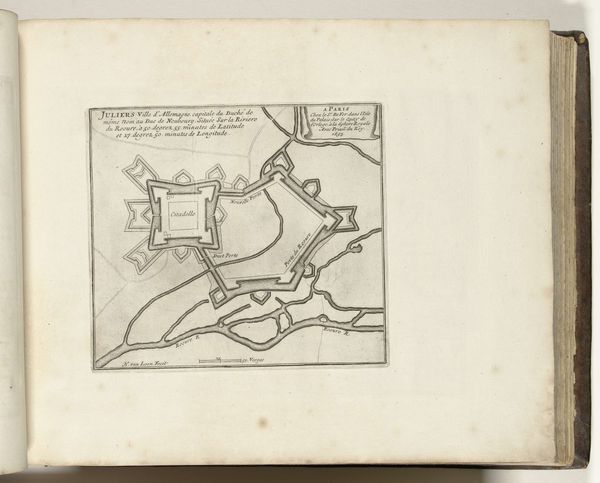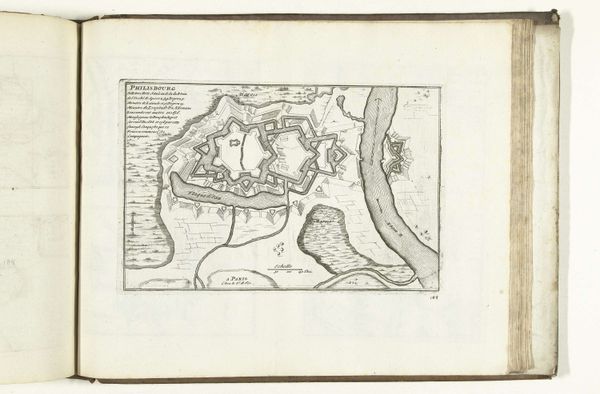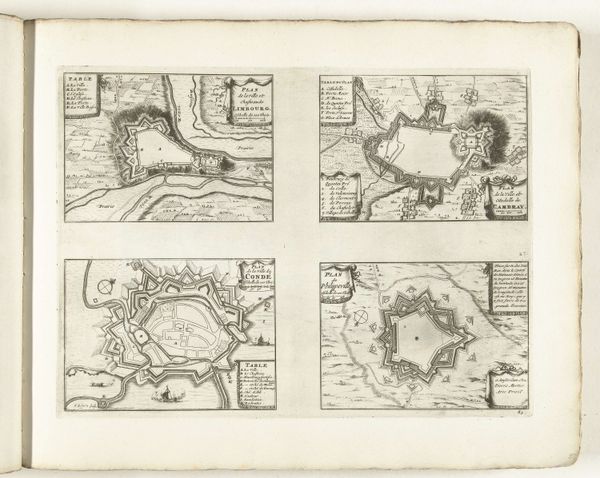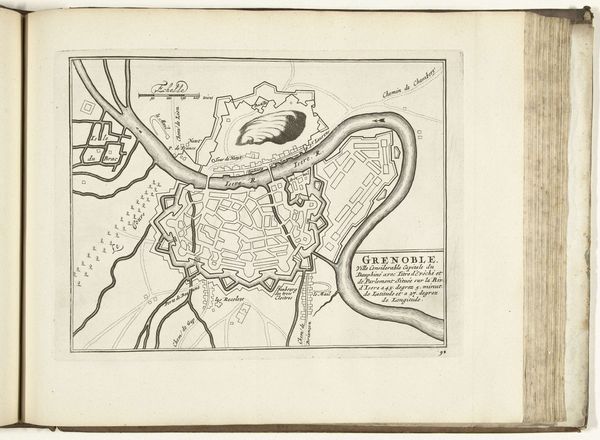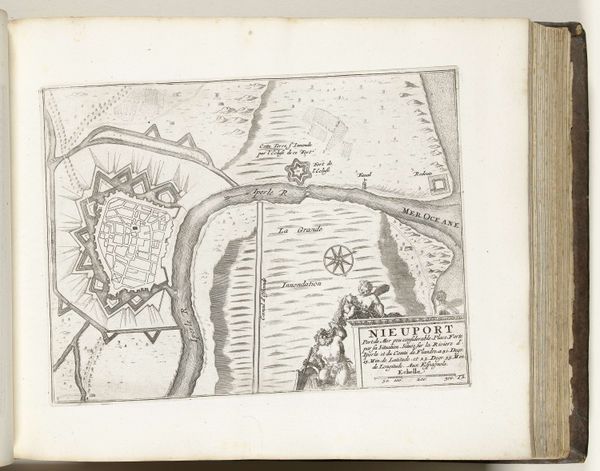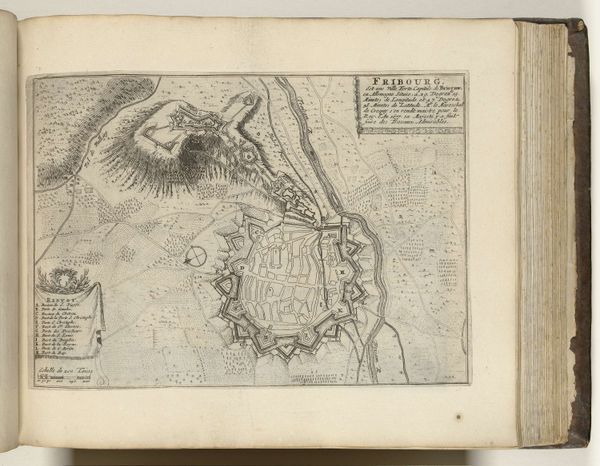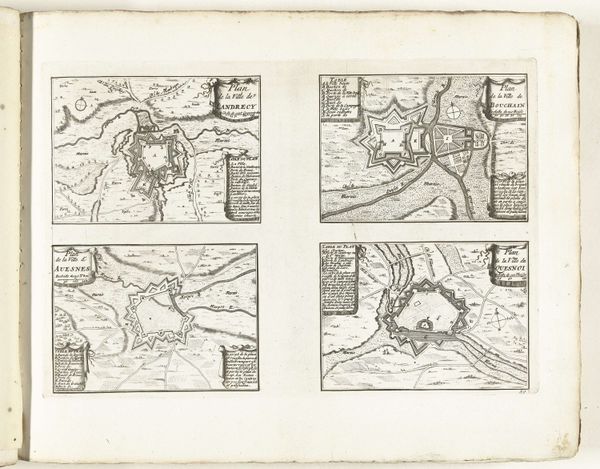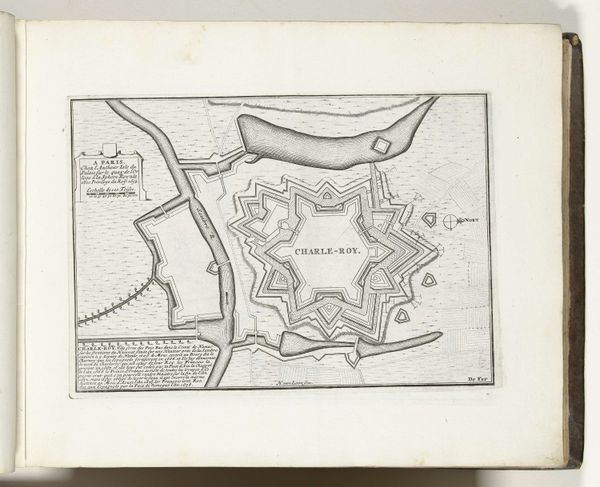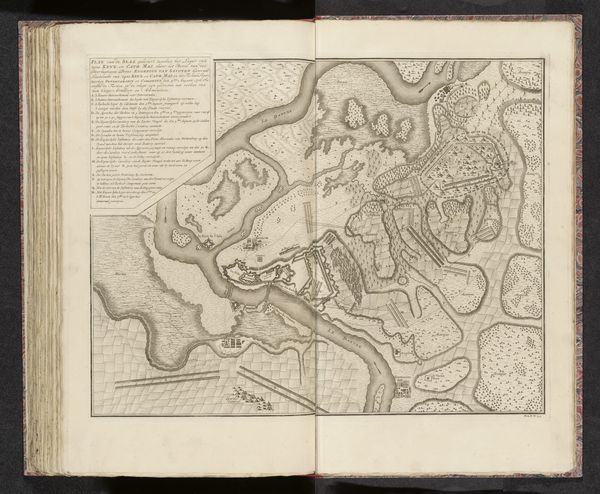
drawing, ink, pen
#
drawing
#
aged paper
#
toned paper
#
baroque
#
pen sketch
#
sketch book
#
landscape
#
personal sketchbook
#
ink
#
ink drawing experimentation
#
geometric
#
pen-ink sketch
#
pen work
#
sketchbook drawing
#
pen
#
history-painting
#
sketchbook art
Dimensions: height 201 mm, width 282 mm
Copyright: Rijks Museum: Open Domain
This is an anonymous plan of the Fort Mont Royal, created in 1693. It’s an engraving, so we know that the image began as a drawing, which was then painstakingly incised into a metal plate, likely copper. The process of engraving requires incredible precision and specialized skill. Notice the fine lines, all running in parallel, to create a sense of shadow and depth. Consider also the labor involved; this wasn’t a quick sketch. It was a time-consuming effort intended to communicate detailed information. The plan depicts the fort within its natural surroundings. The engraver would have used tools of measurement to render the image to scale, and in doing so, they produced a very particular kind of visual knowledge. This print is not just a picture; it's a carefully constructed representation of power, control, and perhaps most of all, territorial ambition. When we look at works like this, we see how materials and processes are never neutral; they are always tied to wider social issues and specific investments of time and labor.
Comments
No comments
Be the first to comment and join the conversation on the ultimate creative platform.
